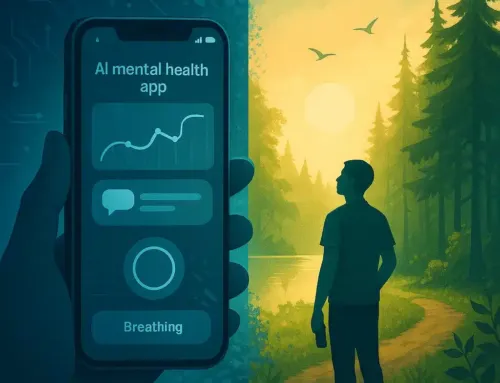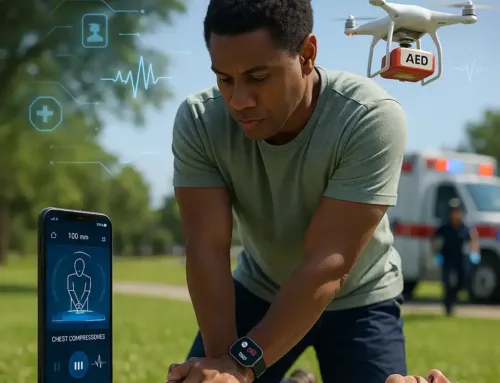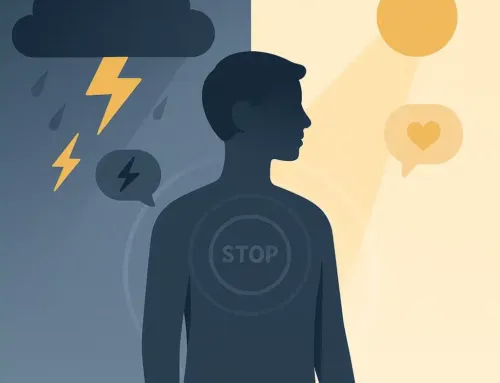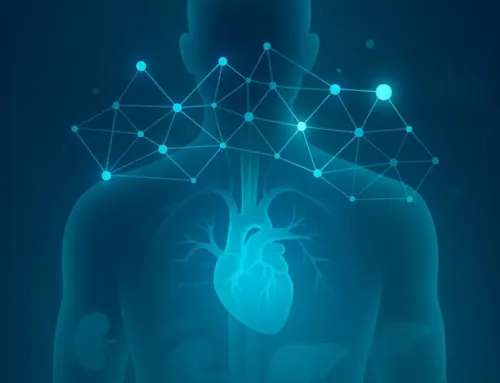
Approx. read time: 11.6 min.
Post: Evaluating the Lab-Origin Theory of COVID-19: Evidence and Implications
Investigating the COVID-19 Lab Leak Hypothesis
Abstract:
The origin of SARS-CoV-2, the virus responsible for the COVID-19 pandemic, remains a subject of intense debate and investigation. While the zoonotic spillover theory suggests a natural transmission from animals to humans, the lab leak hypothesis posits that the virus may have originated from a laboratory in Wuhan, China. This article delves into the arguments presented by prominent scientists like Dr. Richard H. Ebright and analyses the evidence supporting the possibility of a laboratory origin. It also examines the scientific community’s responses, the role of Project DEFUSE, and the implications for global biosecurity and pandemic preparedness.
Introduction – Investigating the COVID-19 Lab Leak Hypothesis
The COVID-19 pandemic has had a profound impact on global health, economies, and societies. Since its emergence in late 2019, understanding the origins of SARS-CoV-2 has been critical for preventing future pandemics. The initial consensus pointed towards a natural zoonotic spillover, likely originating from bats and transmitted to humans via an intermediate host at a wet market in Wuhan, China 1. However, alternative theories have gained traction, particularly the lab leak hypothesis, which suggests that the virus may have accidentally escaped from the Wuhan Institute of Virology (WIV).
Dr. Richard H. Ebright, a molecular biologist at Rutgers University, and other scientists have highlighted evidence that supports this hypothesis. This article explores the arguments, examines the evidence, and discusses the broader implications for scientific research and international collaboration.
Richard H. Ebright and the Lab Leak Hypothesis
Dr. Richard H. Ebright is a respected molecular biologist and biosafety expert who has been vocal about the potential for SARS-CoV-2 to have originated from a laboratory setting. He emphasizes that certain features of the virus, coupled with documented research activities at the WIV, warrant a thorough investigation into the lab leak hypothesis 2.
In an interview with Nicholas Wade, a science writer and former editor at The New York Times, Ebright pointed to a 2018 research proposal as significant evidence. This proposal, titled Project DEFUSE, outlined plans to engineer bat coronaviruses to increase their transmissibility to humans 3.
Project DEFUSE: A Closer Look
Project DEFUSE was a grant proposal submitted by EcoHealth Alliance, a U.S.-based non-profit organization, in collaboration with the WIV and other institutions. The proposal sought funding from the U.S. Defense Advanced Research Projects Agency (DARPA) to study bat-borne coronaviruses and assess their pandemic potential 4.
The project aimed to collect bat coronaviruses and conduct experiments to “defuse” the threat of zoonotic spillover. This included genetically modifying viruses to understand how they might adapt to infect humans. Specifically, the researchers planned to insert cleavage sites into the spike proteins of coronaviruses, potentially enhancing their ability to infect human cells 5.
DARPA ultimately rejected the proposal due to concerns about the risks associated with gain-of-function research, which involves enhancing the pathogenicity or transmissibility of organisms 6. However, questions remain about whether similar research proceeded with alternative funding sources, possibly within China.
Evidence Supporting the Lab Leak Hypothesis
-
Genetic Features of SARS-CoV-2
One of the key arguments for a laboratory origin is the presence of a furin cleavage site in the spike protein of SARS-CoV-2. This feature enhances the virus’s ability to enter human cells and is unusual among other beta-coronaviruses in the same lineage 7. Dr. Ebright and others suggest that the insertion of this site could be indicative of laboratory manipulation.
A study published in Nature Medicine acknowledges that while the furin cleavage site could have arisen naturally, its presence warrants further investigation 8.
-
Temporal and Geographical Correlation
The first known cases of COVID-19 emerged in Wuhan, where the WIV is located. The institute houses one of the world’s largest collections of bat coronaviruses and has conducted extensive research on these viruses 9. The proximity of the outbreak to the laboratory raises questions about a possible connection.
-
Laboratory Safety Concerns
Reports have surfaced about biosafety lapses at the WIV. In 2018, U.S. diplomats visiting the institute sent cables back to Washington expressing concerns about safety and management weaknesses at the lab 10. These cables, reported by The Washington Post, highlighted the risks associated with the WIV’s research on bat coronaviruses.
-
The 2018 Research Proposal
The details of Project DEFUSE, as revealed by leaked documents obtained by DRASTIC (Decentralized Radical Autonomous Search Team Investigating COVID-19), suggest that scientists were proposing to create chimeric viruses 11. Dr. Ebright argues that the methods described in the proposal align with techniques that could have produced SARS-CoV-2 12.
Counterarguments and Support for Natural Origin
-
Historical Precedence of Zoonotic Spillovers
The zoonotic spillover theory is supported by historical examples of coronaviruses crossing species barriers, such as the SARS outbreak in 2002-2004 and MERS in 2012 13. These events underscore the ability of coronaviruses to naturally evolve and adapt to new hosts.
-
Lack of Direct Evidence of Lab Manipulation
Genomic analyses have not found definitive markers of artificial manipulation in SARS-CoV-2 14. A letter published in The Lancet by a group of scientists emphasizes that the virus appears to have evolved naturally 15.
-
Discovery of Related Viruses in Wildlife
Related coronaviruses have been found in bats and pangolins, suggesting a natural reservoir 16. These findings support the possibility of zoonotic transmission without human intervention.
-
Scientific Consensus and Investigations
Multiple studies and investigations, including those by the World Health Organization (WHO), have concluded that a natural origin is the most likely scenario, though they have not ruled out a lab leak entirely 17.
Nicholas Wade’s Contributions
Nicholas Wade has played a significant role in bringing attention to the lab leak hypothesis. In his article “Origin of COVID — Following the Clues,” published in the Bulletin of the Atomic Scientists, Wade examines the available evidence and argues that a laboratory origin is plausible and deserves serious consideration 18.
Wade discusses the reluctance within the scientific community to openly debate the lab leak hypothesis, attributing it to political and funding pressures. He also critiques the initial responses from prominent scientists who dismissed the lab leak theory without substantial evidence 19.
The Role of Scientific Collaboration and Funding
EcoHealth Alliance’s collaboration with the WIV has come under scrutiny. The organization’s president, Dr. Peter Daszak, has been a prominent defender of the WIV and has argued against the lab leak hypothesis 20. Funding from the National Institutes of Health (NIH) to EcoHealth Alliance, which in turn supported research at the WIV, has raised questions about oversight and transparency 21.
In 2021, the NIH requested that EcoHealth Alliance provide information about its experiments involving bat coronaviruses, highlighting concerns about compliance with reporting requirements 22.
International Investigations and Political Implications
The WHO conducted a joint study with Chinese scientists, releasing a report in March 2021 that deemed a laboratory origin “extremely unlikely” 23. However, the investigation faced criticism for limited access to data and potential conflicts of interest among team members 24.
In May 2021, U.S. President Joe Biden ordered the intelligence community to intensify efforts to investigate the origins of COVID-19, acknowledging that both natural spillover and laboratory accident scenarios remained possible 25.
Statements from Biosecurity Experts
Dr. Filippa Lentzos, a biosecurity expert at King’s College London, emphasizes the importance of considering all possible origins of the pandemic, including a laboratory incident 26. She argues that understanding the source is crucial for preventing future outbreaks and improving biosafety standards.
Addressing the United Nations, Lentzos referenced the Independent Task Force on Research with Pandemic Potential, calling for enhanced oversight of high-risk research 27.
Ethical Considerations and Gain-of-Function Research
Gain-of-function research involves manipulating pathogens to study their potential effects on humans, which can provide valuable insights but also poses significant risks 28. The controversy surrounding such research intensified after the H5N1 influenza experiments in 2011, leading to moratoriums and debates over ethical guidelines 29.
The possibility that SARS-CoV-2 resulted from gain-of-function experiments has reignited discussions about the regulation of such research. Proponents argue that it is essential for understanding and preventing pandemics, while critics highlight the dangers of accidental release and biosecurity breaches 30.
Calls for Transparency and Data Sharing
Transparency and access to data are critical for resolving the origins debate. Scientists have called on China to share raw data, laboratory records, and virus samples collected before and during the early stages of the pandemic 31.
In an open letter published in Science, a group of researchers urged the international community to conduct a comprehensive investigation, emphasizing that theories of accidental release from a lab and zoonotic spillover both remain viable 32.
Implications for Global Health and Policy
Understanding the origins of COVID-19 has significant implications for global health security, policy-making, and international relations. If the lab leak hypothesis is confirmed, it could lead to:
- Reevaluation of Biosafety Protocols: Strengthening laboratory safety measures worldwide to prevent future accidents.
- Policy Reforms on High-Risk Research: Implementing stricter regulations and oversight on gain-of-function research.
- International Cooperation and Accountability: Enhancing collaboration between nations to address biosecurity threats while ensuring transparency.
- Public Trust in Science: Addressing misinformation and rebuilding confidence in scientific institutions and public health authorities.
Conclusion
The origin of SARS-CoV-2 remains unresolved, with compelling arguments on both sides of the debate. While the lab leak hypothesis is supported by certain pieces of evidence and expert opinions, the natural zoonotic spillover theory is backed by historical precedents and substantial research.
The discourse highlights the need for rigorous scientific investigation, transparency, and international collaboration. Regardless of the origin, the COVID-19 pandemic underscores the importance of preparedness, robust public health infrastructure, and ethical considerations in scientific research.
Moving forward, it is essential to maintain an open mind, encourage dialogue, and prioritize evidence-based conclusions. Only through comprehensive investigation and cooperation can the global community hope to uncover the truth and prevent future pandemics.
References
Note: This article aims to present a balanced overview of the ongoing debate regarding the origins of SARS-CoV-2. The information provided is based on published research and credible sources up to October 2023. The scientific community continues to investigate, and new evidence may emerge that could influence current understanding.
Footnotes
-
Zhou, P., Yang, X.-L., Wang, X.-G., et al. (2020). A pneumonia outbreak associated with a new coronavirus of probable bat origin. Nature, 579(7798), 270–273. ↩
-
Ebright, R. H. (2020). Expert reaction to Trump’s statement on Wuhan lab and coronavirus. Science Media Centre. Retrieved from https://www.sciencemediacentre.org/expert-reaction-to-trumps-statement-on-wuhan-lab-and-coronavirus/ ↩
-
Wade, N. (2021). Origin of COVID — Following the Clues. Bulletin of the Atomic Scientists. Retrieved from https://thebulletin.org/2021/05/the-origin-of-covid-did-people-or-nature-open-pandoras-box-at-wuhan/ ↩
-
EcoHealth Alliance. (2018). Project DEFUSE Proposal. [Leaked documents]. ↩
-
Sirotkin, K., & Sirotkin, D. (2020). Might SARS-CoV-2 Have Arisen via Serial Passage through an Animal Host or Cell Culture? A Potential Explanation for Much of the Novel Coronavirus’ Distinctiveness. Preprints. ↩
-
DRASTIC Research. (2021). DARPA rejection letter. Retrieved from https://drasticresearch.org/2021/09/23/darpa-rejection-letter/ ↩
-
Coutard, B., Valle, C., de Lamballerie, X., et al. (2020). The spike glycoprotein of the new coronavirus 2019-nCoV contains a furin-like cleavage site absent in CoV of the same clade. Antiviral Research, 176, 104742. ↩
-
Andersen, K. G., Rambaut, A., Lipkin, W. I., et al. (2020). The proximal origin of SARS-CoV-2. Nature Medicine, 26(4), 450–452. ↩
-
Wuhan Institute of Virology. (n.d.). About WIV. Retrieved from http://english.whiov.cas.cn/ ↩
-
Rogin, J. (2020). State Department cables warned of safety issues at Wuhan lab studying bat coronaviruses. The Washington Post. Retrieved from https://www.washingtonpost.com/opinions/2020/04/14/state-department-cables-warned-safety-issues-wuhan-lab-studying-bat-coronaviruses/ ↩
-
DRASTIC Research. (2021). Leaked grant proposal documents. Retrieved from https://drasticresearch.org/ ↩
-
Ebright, R. H. (2021). Statements on Project DEFUSE. Twitter. ↩
-
Cui, J., Li, F., & Shi, Z.-L. (2019). Origin and evolution of pathogenic coronaviruses. Nature Reviews Microbiology, 17(3), 181–192. ↩
-
MacLean, O. A., Orton, R. J., Singer, J. B., & Robertson, D. L. (2020). No evidence for distinct types in the evolution of SARS-CoV-2. Virus Evolution, 6(1), veaa034. ↩
-
Calisher, C., Carroll, D., Colwell, R., et al. (2020). Statement in support of the scientists, public health professionals, and medical professionals of China combatting COVID-19. The Lancet, 395(10226), e42–e43. ↩
-
Lam, T. T.-Y., Shum, M. H.-H., Zhu, H.-C., et al. (2020). Identifying SARS-CoV-2-related coronaviruses in Malayan pangolins. Nature, 583(7815), 282–285. ↩
-
World Health Organization. (2021). WHO-convened global study of origins of SARS-CoV-2: China Part. Retrieved from https://www.who.int/publications/i/item/who-convened-global-study-of-origins-of-sars-cov-2-china-part ↩
-
Wade, N. (2021). Origin of COVID — Following the Clues. ↩
-
Ibid. ↩
-
Daszak, P., et al. (2020). Statement in support of the scientists, public health professionals, and medical professionals of China combatting COVID-19. The Lancet, 395(10226), e42–e43. ↩
-
National Institutes of Health. (2021). NIH Grants to EcoHealth Alliance. Retrieved from https://www.nih.gov/news-events/news-releases/nih-corrects-untruthful-claims-about-ecohealth-alliance-grant ↩
-
Hamilton, J. (2021). NIH Demands Unpublished Data on Coronavirus Experiment from EcoHealth Alliance. NPR. Retrieved from https://www.npr.org/2021/10/21/1048122804/nih-demands-unpublished-data-on-coronavirus-experiment-from-ecohealth-alliance ↩
-
World Health Organization. (2021). WHO-convened global study of origins of SARS-CoV-2: China Part. ↩
-
Cohen, J. (2021). WHO report into COVID-19 origins zeroes in on animal markets, not labs. Science. Retrieved from https://www.science.org/content/article/who-report-covid-19-origins-zeroes-animal-markets-not-labs ↩
-
The White House. (2021). Statement by President Joe Biden on the Investigation into the Origins of COVID-19. Retrieved from https://www.whitehouse.gov/briefing-room/statements-releases/2021/05/26/statement-by-president-joe-biden-on-the-investigation-into-the-origins-of-covid-19/ ↩
-
Lentzos, F. (2021). COVID-19: Here’s why the lab-leak theory is being taken seriously. The Conversation. Retrieved from https://theconversation.com/covid-19-heres-why-the-lab-leak-theory-is-being-taken-seriously-162484 ↩
-
United Nations. (2021). Biological Weapons Convention Meeting of Experts. Retrieved from https://meetings.unoda.org/section/bwc-mx-2021/ ↩
-
Imperiale, M. J., & Casadevall, A. (2014). A new synthesis for dual use research of concern. PLOS Medicine, 11(3), e1001631. ↩
-
Enserink, M., & Cohen, J. (2011). Virus researchers locked in stand-off with public health over mutant flu. Science, 334(6060), 1192–1193. ↩
-
Kahn, L. H. (2020). A call for an immediate ban on gain-of-function research. Bulletin of the Atomic Scientists. Retrieved from https://thebulletin.org/2020/04/a-call-for-an-immediate-ban-on-gain-of-function-research/ ↩
-
Maxmen, A., & Mallapaty, S. (2021). The COVID lab-leak hypothesis: what scientists do and don’t know. Nature, 594(7863), 313–315. ↩
-
Bloom, J. D., Chan, Y. A., Baric, R. S., et al. (2021). Investigate the origins of COVID-19. Science, 372(6543), 694. ↩
Related Videos:
Related Posts:
Understanding the Israel-Gaza Conflict: Involvement of Iran, Lebanon, and Militant Groups
Materials Science Revolutionized by AI: DeepMind’s GNoME and Autonomous Laboratories
Scientific Systematic approach to Problem Solving
Experienced Employees, COVID-19 Impact & Workforce Efficiency
Microsoft Distances Itself from Minecraft Creator Markus “Notch” Persson









